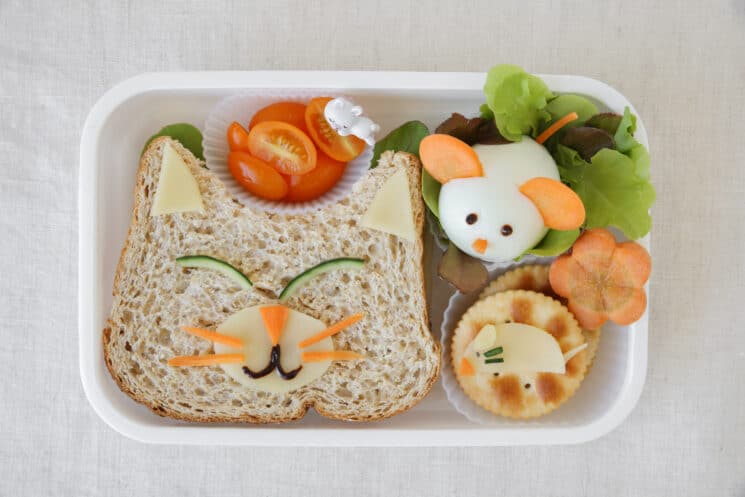As parents, one of our responsibilities is to teach our children essential life skills that will benefit them as they grow older. One such skill is learning how to make their own sandwich. In this article, we will explore the importance of teaching kids to make their own sandwich, the benefits it brings, and age-appropriate steps to guide them through the process.
Importance of Teaching Kids to Make Their Own Sandwich
Teaching kids to make their own sandwich is more than just a practical skill. It empowers them with independence, self-reliance, and a sense of accomplishment. By learning this basic culinary skill, children can develop a better understanding of nutrition, foster creativity, and improve their motor skills. It also instills in them a sense of responsibility and helps prepare them for future tasks in the kitchen.
Benefits of Teaching Kids to Make Their Own Sandwich
When children learn to make their own sandwich, they reap numerous benefits. Firstly, it encourages healthier eating habits as they gain control over the ingredients they use. They can choose whole grain bread, fresh vegetables, and lean proteins, making their meal more nutritious. Additionally, making their own sandwich provides an opportunity for children to explore their creativity by experimenting with various flavors and combinations. It also fosters a sense of ownership and pride in their creations, boosting their self-esteem.
Age-Appropriate Steps to Teach Kids to Make Their Own Sandwich
To effectively teach kids to make their own sandwich, it is essential to break down the process into age-appropriate steps. Here are some guidelines to follow:
1 Choosing Simple Recipes
Start with simple sandwich recipes that require minimal preparation and assembly. This allows children to focus on the fundamental skills needed to make a sandwich, such as spreading condiments and layering ingredients.
2 Gathering Ingredients and Tools
Teach kids how to gather the necessary ingredients and tools for making a sandwich. Show them how to select fresh and healthy ingredients while emphasizing the importance of cleanliness and organization in the kitchen.
3 Demonstrating the Process
Demonstrate each step of the sandwich-making process. Show them how to handle utensils safely, slice bread, and layer ingredients. Provide clear instructions and explain the purpose behind each step.
4 Guiding and Supervising
Initially, guide and supervise your child as they make their first few sandwiches. Offer gentle corrections, tips, and encouragement. Gradually reduce your involvement as they gain confidence and become more proficient.
Tips for Making the Learning Experience Fun
To make the learning experience enjoyable for kids, consider the following tips:
- Incorporate storytelling: Share fun facts about sandwiches or create imaginative stories related to the ingredients.
- Use colorful ingredients: Encourage the use of vibrant fruits and vegetables to make the sandwich visually appealing.
- Organize a sandwich-making contest: Turn sandwich-making into a friendly competition between siblings or friends, focusing on creativity and taste.
- Make themed sandwiches: Create sandwiches that resemble animals, shapes, or favorite characters, fostering excitement and creativity.
Encouraging Independence and Responsibility
Teaching kids to make their own sandwich promotes independence and responsibility. By assigning them this task, you are giving them the opportunity to take charge of their own meals. Encourage them to plan, prepare, and clean up after themselves, instilling valuable life skills that will benefit them in the long run.
Safety Precautions
While teaching kids to make their own sandwich, it is crucial to prioritize safety. Emphasize the importance of handwashing, proper knife handling, and using child-friendly utensils. Supervise younger children closely to prevent accidents and ensure a safe learning environment.
Incorporating Nutritional Education
As kids make their own sandwiches, take the opportunity to educate them about the nutritional value of different ingredients. Teach them about food groups, portion sizes, and the benefits of including a variety of fruits, vegetables, and proteins in their sandwiches. This knowledge will help them make informed choices when assembling their meals.
Building Confidence and Self-Esteem
Every successful sandwich-making endeavor boosts a child’s confidence and self-esteem. Acknowledge and praise their efforts, highlighting their accomplishments. Encourage them to share their creations with family and friends, further reinforcing their sense of achievement.
Promoting Creativity and Customization
Making their own sandwich allows children to express their creativity and preferences. Encourage them to experiment with different ingredients, flavors, and textures. This promotes an adventurous palate and nurtures their ability to personalize their meals.
Reinforcing Math and Language Skills
Engage children in simple math and language exercises while making sandwiches. Ask them to count the number of ingredients or slices, or have them read recipes aloud. This integration of basic academic skills into everyday tasks strengthens their understanding and familiarity with numbers and words.
Teaching Food Hygiene and Proper Handling
Teach kids about food hygiene and proper handling techniques during the sandwich-making process. Emphasize the importance of washing hands, using clean utensils, and storing ingredients correctly. These practices ensure food safety and instill lifelong habits.
Overcoming Challenges and Fostering Perseverance
Making a sandwich can present challenges, especially for younger children. Encourage perseverance and problem-solving skills by guiding them through any difficulties they encounter. Show them that mistakes are opportunities for learning and growth.
Celebrating Achievements
Celebrate each milestone and achievement in your child’s sandwich-making journey. Share their accomplishments with family members and praise their progress. Consider creating a “sandwich-making certificate” or displaying their best creations to commemorate their hard work.
Teaching kids to make their own sandwich is a valuable life skill that empowers them with independence, responsibility, and a sense of accomplishment. By breaking down the process into age-appropriate steps and incorporating fun and educational elements, parents can make the learning experience enjoyable for their children. So, equip your little ones with this culinary know-how and watch them grow into confident, self-sufficient individuals.




